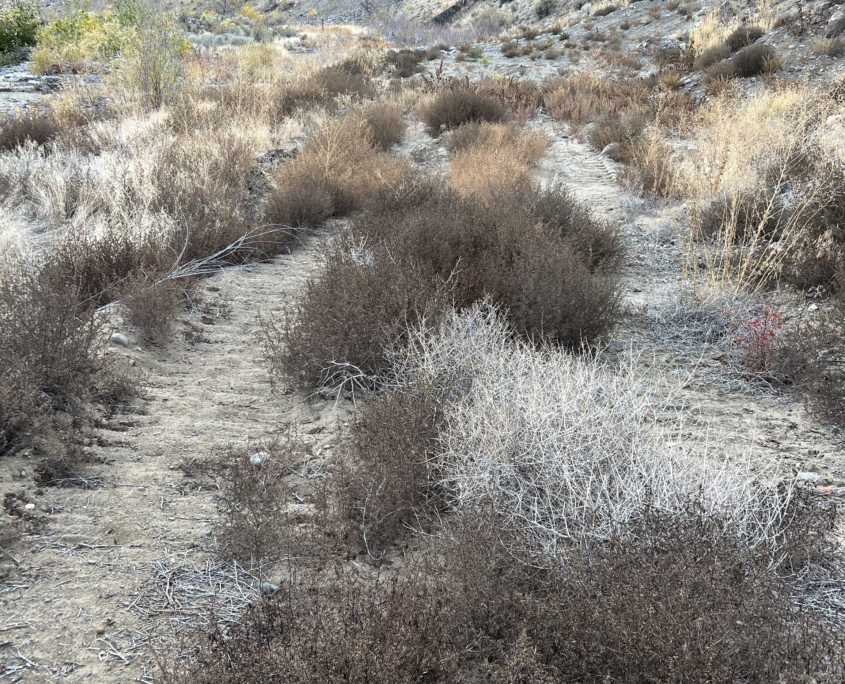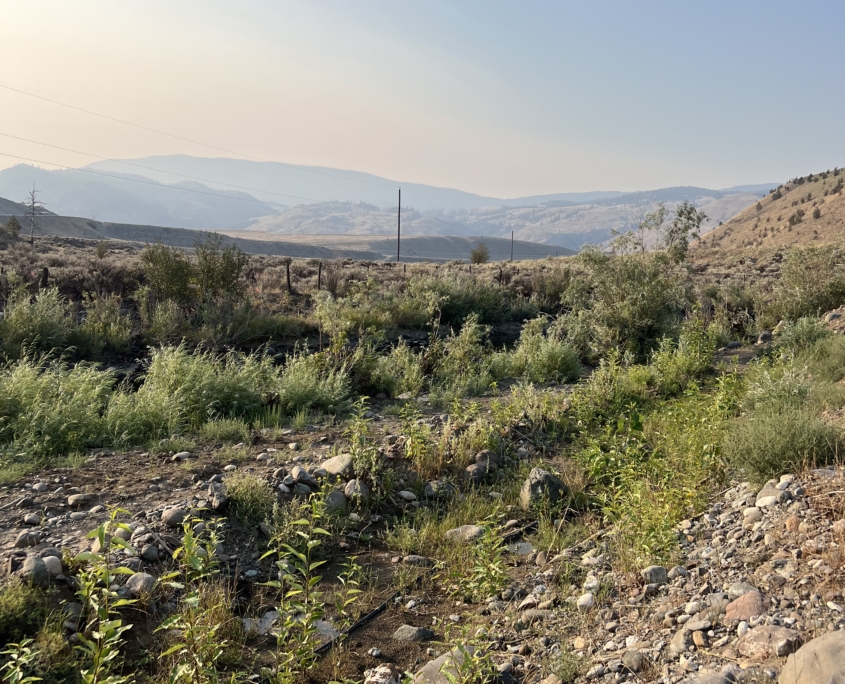What are riffles?
Riffles – important salmon habitat – are shallow, fast-moving sections of a stream where water is seen splashing through rocks, allowing oxygen to mix into the water.
This story originally appeared in Salmon Steward, the Pacific Salmon Foundation’s quarterly print magazine.
In B.C.’s southern Interior, black cottonwood trees are crucial to salmon habitat. An oasis in an otherwise arid landscape, cottonwood riparian forests support stream health by preventing erosion, improving water quality, and providing shade and shelter for dozens of species – including Pacific salmon.
The Deadman River, located in the traditional lands of the Skeetchestn Indian Band, near Kamloops Lake, is an area where cottonwoods have vanished due to industrial development and climate change. The Deadman is a key tributary to the Thompson River, providing valuable habitat for pink, coho, steelhead, and Chinook salmon.
However, decades of extensive logging and recent wildfires have drastically changed the Deadman’s water flow patterns. The area now experiences a 100-year flood event every 10 years.
“Since 1990, the Deadman has experienced repeated large floods. Without the historic forest cover and floodplains, there’s a lot of water moving downstream very quickly. The lower parts of the river are eroding fast,” says Brenley Yuan, Resource Restoration Biologist, Fisheries and Oceans Canada (DFO).
Powerful currents have carved a deep riverbed and steep banks, hindering the Deadman’s ability to overflow into the floodplain. Without active floodplains to provide the necessary water and nutrients, cottonwoods struggle to survive. Bringing these trees back to the riverbank could be pivotal to breaking this cycle and supporting local salmon populations.
“Salmon habitat isn’t just instream. The riparian coverage is important for them as well, especially in the Interior, when flows get so low, and the water gets so hot during the summer. Having healthy cottonwoods and floodplain connectivity is beneficial for the salmon and for the greater ecosystem,” adds Yuan.
With support from PSF’s Community Salmon Program, Skeetchestn Indian Band collaborated with DFO, UBC, and the Okanagan Nation Alliance to carry out a two-part restoration project in the Lower Deadman.
The first part of the project pairs experimental planting of cottonwood cuttings with solar-powered irrigation to determine which low-maintenance, low-budget strategies can help maximize seedling survival.
The second part focuses on re-engaging an abandoned floodplain by restoring natural flooding patterns in this hot, dry watershed. This involves widening and lowering the riverbanks, adding large woody debris in the floodplain, and constructing riffles to elevate the water table.
Riffles – important salmon habitat – are shallow, fast-moving sections of a stream where water is seen splashing through rocks, allowing oxygen to mix into the water.
“The riffles we’ve installed are going to create fish habitat, hold some water back, and help engage the floodplain. This is the first step toward bringing back riparian coverage,” says Don Ignace, General Manager, Skeetchestn Natural Resources Corporation.
“Years ago, there were cottonwoods all the way down the riverbank. Now, it’s a barren land. This project is going to show us how to help nature come back and take care of itself.”
Ignace notes the destructive floods and wildfires during the last 35 years that devastated the watershed. In this context, Skeetchestn aims to restore the river channel and floodplain to enhance long-term cottonwood growth and improve habitat for salmon. By blending traditional and experimental methods, they also hope to gain valuable insights for future restoration projects.
“Being the main stewards of the land and the watershed, everyone comes to collaborate through Skeetchestn. We’re working together, learning from partners, and building long-term capacity so we can bring local knowledge to future projects,” says Ignace.


Since 1994, the Pacific Salmon Foundation (PSF) has stewarded funds from the Salmon Conservation Stamp on behalf of Fisheries and Oceans Canada. PSF leverages the approximately $1.5 million in annual stamp revenue with additional funds from generous donors, supporting over 150 salmon conservation projects through its Community Salmon Program. As of 2025, the program has directed $31 million to more than 3,500 community- and Indigenous-led projects across BC and the Yukon, with a total value of roughly $222 million.

 Remembering Champions of Pacific Salmon: Peter McCully and Pat George
Remembering Champions of Pacific Salmon: Peter McCully and Pat George